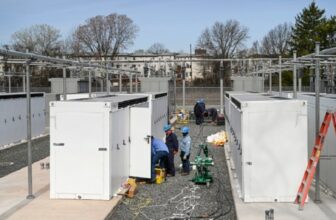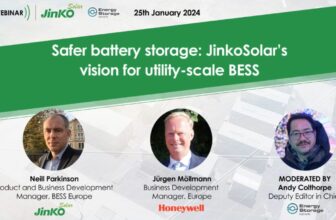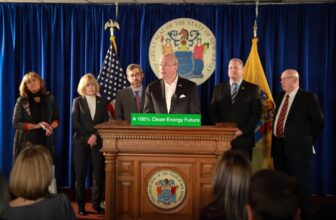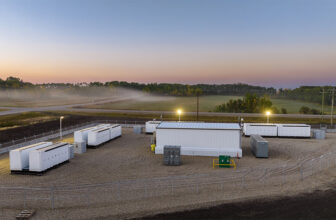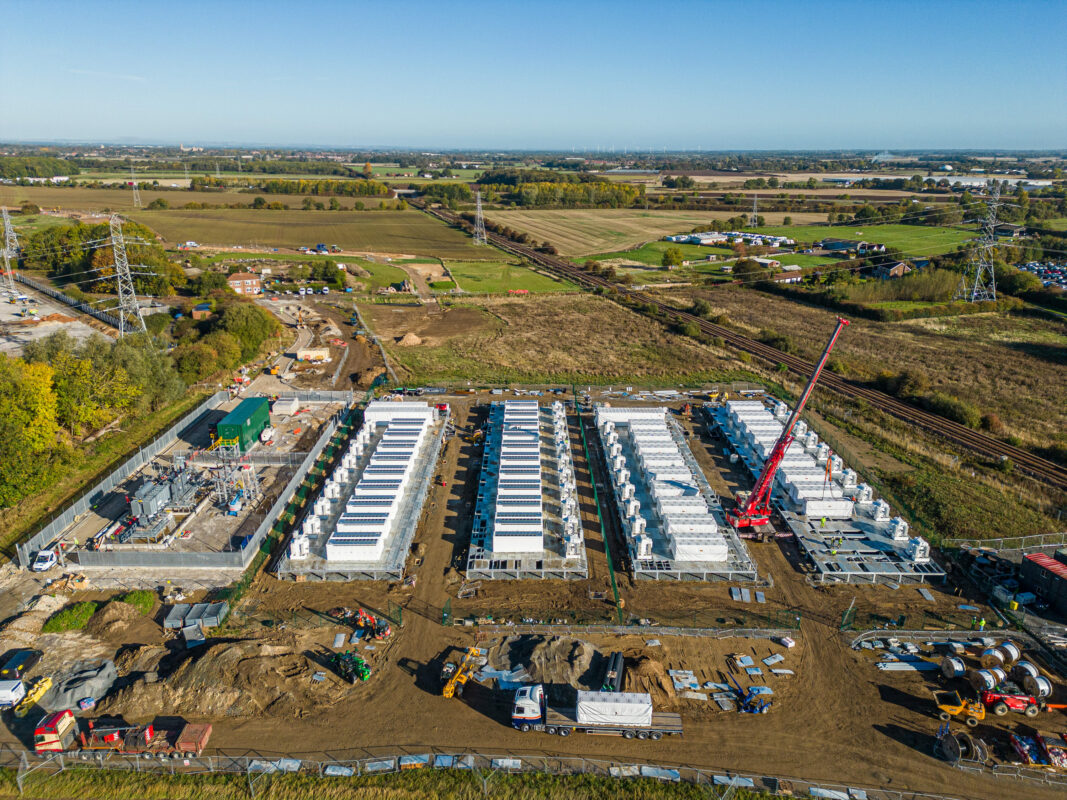
[ad_1]
The new policy comes against the backdrop of more than 4,400 applications for over 200GW of licenses to put energy storage at solar PV and wind power plants around the country received by the national Energy Markets Regulatory Authority (EMRA).
EMRA has thus far granted pre-licenses to 25,630MW of those applications, across 493 projects.
That in itself is exciting news but it was really interesting to see EMRA chief Mustafa Yilmaz firmly state on 29 December that the regulator would not “allow anyone to abuse” investment processes in the fledgling renewables-plus-storage sector.
“The rules of our market are clear and everyone must comply with these rules. Pre-license cannot be transferred, and shares or shares cannot be transferred, except for the exceptions specified in the regulation. If this is done, the pre-license will be canceled and the guarantee given by the company will be forfeited,” Yilmaz said.
Yilmaz said that at a meeting of the EMRA board that day, one company’s pre-license had been cancelled due to an unsanctioned transfer of shares, which the president said he hoped would be the last time, adding that once pre-licensing is completed, companies “must obtain a license and complete the investment,” or they will lose that opportunity.
The punitive level of tax on LFP – applicable to racks and modules as well as to cells – is also partly designed to protect the Turkish energy sector and by extension its population from bad actors, Can Tokcan said.
With China the world’s manufacturing hub of LFP today, the rules will of course impact imports from Chinese makers first and foremost. While that may sound protectionist, the reality is that China has top-class manufacturers and it also has very cheap manufacturers.
Tokcan said that the rules will therefore have a triple-pronged intention: to encourage Turkish LFP manufacturers to ramp up their own investments and production capacities, to stop developers from using the cheapest Chinese cells they can find, while the taxes paid will go into the national coffers.
On a related in theme, the India Energy Storage Alliance (IESA) trade association has made a few recommendations to its country’s government ahead of the release of India’s Union Budget for the 2024-2025 fiscal year on 1 February.
Among those recommendations, which you can read about here, were that import duties be placed on imports of cells and supply chain components, which would include raw and processed materials. This would boost the competitiveness of domestic producers, IESA said.
At the same time, IESA requested that the government double the 50GWh target for advanced battery cell manufacturing through its Production Linked Incentive (PLI) scheme to 100GWh. Through PLI, India is supporting the construction of gigafactories around India. Yesterday, IESA got an unexpected present when, still ahead of the budget’s unveiling, an extra 10GWh was added to the scheme.
The examples from Turkey and India indicate that both governments see that supporting domestic competitiveness is about both carrot and stick, perhaps in the same way that the US has put tariffs on imported Chinese modules while at the same time offering generous tax credit and other incentives to encourage investment at home.
China’s 22.6GW year
Well, if we talk about supporting domestic industry then the obvious place to look at is China. There’s of course a lot to be said about that, but let’s focus on the demand side rather than the supply side for a moment.
China’s official state news agency Xinhua announced yesterday that “new-type” energy storage capacity hit 31.39GW by the end of 2023, according to the National Energy Administration. That was after 22.6GW was deployed in the 12 months of last year alone, representing a near-tenfold increase since 2020. According to an NEA official, of that, 97.4% are lithium-ion (Li-ion) battery storage systems.
Coming back to our original theme, it’s reasonable to infer that this would likely not be possible had China not put so much investment into low-carbon technologies including solar PV and batteries over the past few years.
As Can Tokcan acknowledged in our interview on Turkey’s taxes, many of those Chinese companies make high-quality goods. As analysis firms S&P Global and Wood Mackenzie both said during this year, further up the value stream, Chinese system integrators are now also ranking among the top in the world, often diversifying from manufacturing into project work.
You may also remember that BloombergNEF head of energy storage analysis Yayoi Sekine told Energy-Storage.news recently that in compiling the firm’s inaugural Tier-1 BESS supplier list, BloombergNEF found “a significant uptick of lesser known suppliers, especially from China”.
It’s getting a bit ridiculous now
In last week’s Friday Briefing, we also talked about how we’ve already seen project announcements on a gigawatt-hour scale in several markets.
As journalists here at Energy-Storage.news, companies and their public relations representatives will always try and make their announcements and commentaries stand out from the forests of releases landing in our inboxes each week.
That’s part of the game, I suppose. Within that, it’s understandable that the size of projects has become something of a bragging game. As one source (hello, Yann!) told me: “in solar, we had ‘braggawatts’. In energy storage, maybe it’s ‘braggawatt-hours’!”
Well, that is indeed all well and good, but sometimes this sort of battery-based space race to the top can get a bit ridiculous. One inexperienced PR representative told the world that their client’s 30MW project was “perhaps” the biggest battery storage project in the world. This was in the middle of last year, and of course, it wasn’t anything like the biggest.
Well, we’re perhaps just as excited as anyone else to see a ‘biggest project’ announcement. Given how new this industry is, we can expect them to come frequently for a long while yet. Sorting through the claims and figuring out who really does have the megawatt-hours to ‘braggawatt-hour’ about, is another matter entirely. With projects often announced at very early stages of development, it’s also not easy to call which claimed biggest projects will go online first, or will even go ahead at all.
Energy-Storage.news senior reporter Cameron Murray had a look at some of the recent claims coming from European developers and investors and had this to say:
“Various companies have claimed they are working on Europe’s largest BESS. Any project being developed or built that is larger than two 99MW/198MWh Harmony Energy projects that currently hold the title, can justifiably make the claim if they ignore likely commercial operation dates (COD).
In the UK, two projects around 300MW/600MWh are currently under construction, from Zenobē Energy and SSE Renewables (though neither has specifically made the claim of having the largest project underway).
TotalEnergies acquisition target Kyon Energy claimed the ‘largest European BESS’ title for a 275MWh project in Germany it got planning approval for in November, and utility and independent power producer (IPP) Engie last week claimed the same for a 200MW (MWh undisclosed) project in Belgium while the designers of a 200MW/800MWh project for Enel in Italy recently did the same.
These projects are set to come online between late 2024 and 2025.”
Worth noting that this week we did get another ‘biggest’ BESS come online. Unsurprisingly perhaps, it’s in California, at developer Terra-Gen’s Edwards & Sanborn solar-plus-storage project, which features 3,287MWh of battery storage, alongside 875MWdc of solar generation capacity. And yes, that’s legit, surpassing the 3GWh capacity of Moss Landing Energy Storage Facility, also in California. In Chile meanwhile, an even bigger project in the Atacama desert will feature 4.1GWh of batteries, albeit like Edwards & Sanborn and Moss Landing Energy Storage Facility it is being built in phases and is still at a fairly early stage of that process.
Happy Friday!
Energy-Storage.news’ publisher Solar Media will host the 9th annual Energy Storage Summit EU in London, 20-21 February 2024. This year it is moving to a larger venue, bringing together Europe’s leading investors, policymakers, developers, utilities, energy buyers and service providers all in one place. Visit the official site for more info.
[ad_2]



